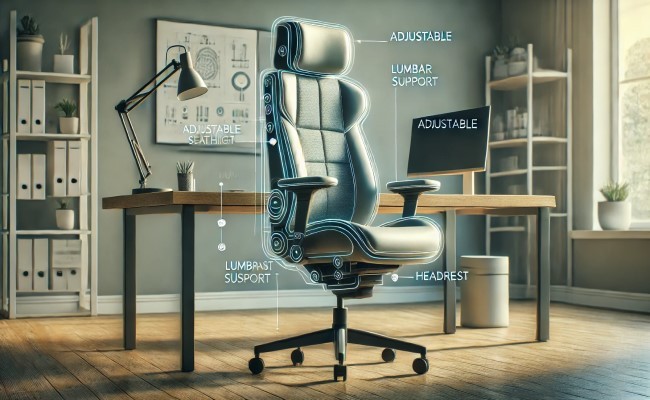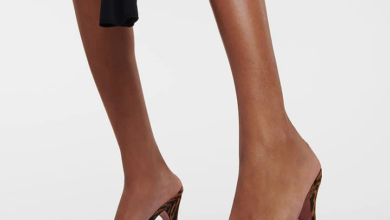Top Ergonomic Features to Look for in Office Chairs

When setting up your office space, choosing the right office furniture is crucial for both productivity and health. Ergonomic office chairs can significantly impact your comfort and well-being, especially if you spend long hours working at a desk. To help you select the perfect chair, here are the top ergonomic features to look for that will enhance your workspace and support your body.
Adjustable Seat Height
One of the most fundamental ergonomic features of an office chair is adjustable seat height. This allows you to customize the chair’s height to ensure that your feet are flat on the floor and your knees are at a 90-degree angle. Proper seat height adjustment promotes good posture and helps prevent strain on your lower back and legs. Look for chairs with a pneumatic height adjustment mechanism for smooth and easy adjustments.
Lumbar Support
Adequate lumbar support is essential for maintaining the natural curve of your spine and preventing lower back pain. An ergonomic office chair should have a contoured backrest that supports your lumbar region. Some chairs offer adjustable lumbar support, allowing you to position it exactly where you need it. This feature helps reduce pressure on your lower back and encourages proper spinal alignment.
Backrest Tilt and Recline
The ability to tilt and recline the backrest is a valuable ergonomic feature that allows you to adjust the chair to your preferred angle. A reclining backrest enables you to shift your weight and change your sitting position, which can reduce fatigue and improve circulation. Look for chairs with a lockable tilt mechanism so you can set the backrest at a comfortable angle and keep it in place while working.
Adjustable Armrests
Adjustable armrests provide support for your arms and shoulders, helping to reduce tension and discomfort. An ergonomic office chair should have armrests that can be adjusted in height, width, and angle to accommodate your body and desk setup. Properly positioned armrests help maintain a relaxed shoulder posture and prevent strain on your neck and upper back.
Seat Depth and Width Adjustment
The depth and width of the seat can impact your overall comfort. Look for a chair with adjustable seat depth to ensure that the seat pan supports your thighs without pressing against the back of your knees. This feature allows you to find the optimal seat depth for your body size and preferences. Additionally, a seat with sufficient width provides ample space and prevents you from feeling cramped.
Headrest Adjustment
A headrest can provide additional support for your neck and head, particularly if you spend long hours at your desk. Look for chairs with an adjustable headrest that can be moved up, down, and tilted to fit your height and preferred sitting position. Proper head and neck support helps reduce strain and promotes a more comfortable sitting posture.
Breathable Materials
The material of the office chair affects its comfort and ventilation. Breathable materials, such as mesh or moisture-wicking fabric, help regulate temperature and prevent overheating during extended periods of sitting. A chair with a breathable backrest and seat can enhance airflow and keep you cool, contributing to a more comfortable work environment.
360-Degree Swivel
A chair with 360-degree swivel functionality allows you to move freely and access different areas of your workspace without straining. This feature is particularly useful if you need to reach across your desk or switch between different tasks. Smooth swivel movement enhances your mobility and helps you stay productive throughout the day.
Adjustable Tilt Tension
Tilt tension adjustment allows you to control the resistance of the chair’s tilt mechanism, making it easier to recline or lean forward. This feature lets you customize the chair’s tilt resistance to match your body weight and preferences. Proper tilt tension adjustment helps maintain comfort and support as you shift your sitting position.
Sturdy Base and Casters
The base and casters of the office chair play a crucial role in stability and mobility. Look for a chair with a five-point base for enhanced stability and to prevent tipping. Casters should be suitable for your flooring type, whether it’s carpet, hardwood, or tile. High-quality casters provide smooth rolling and allow you to move easily around your workspace.
Office Chairs
Selecting an office chair with these top ergonomic features will ensure that your office furniture supports your health and productivity. By prioritizing adjustable seat height, lumbar support, backrest tilt, and other key features, you can create a comfortable and supportive workspace that meets your needs. Investing in a well-designed ergonomic chair is an essential step toward enhancing your work environment and overall well-being.



